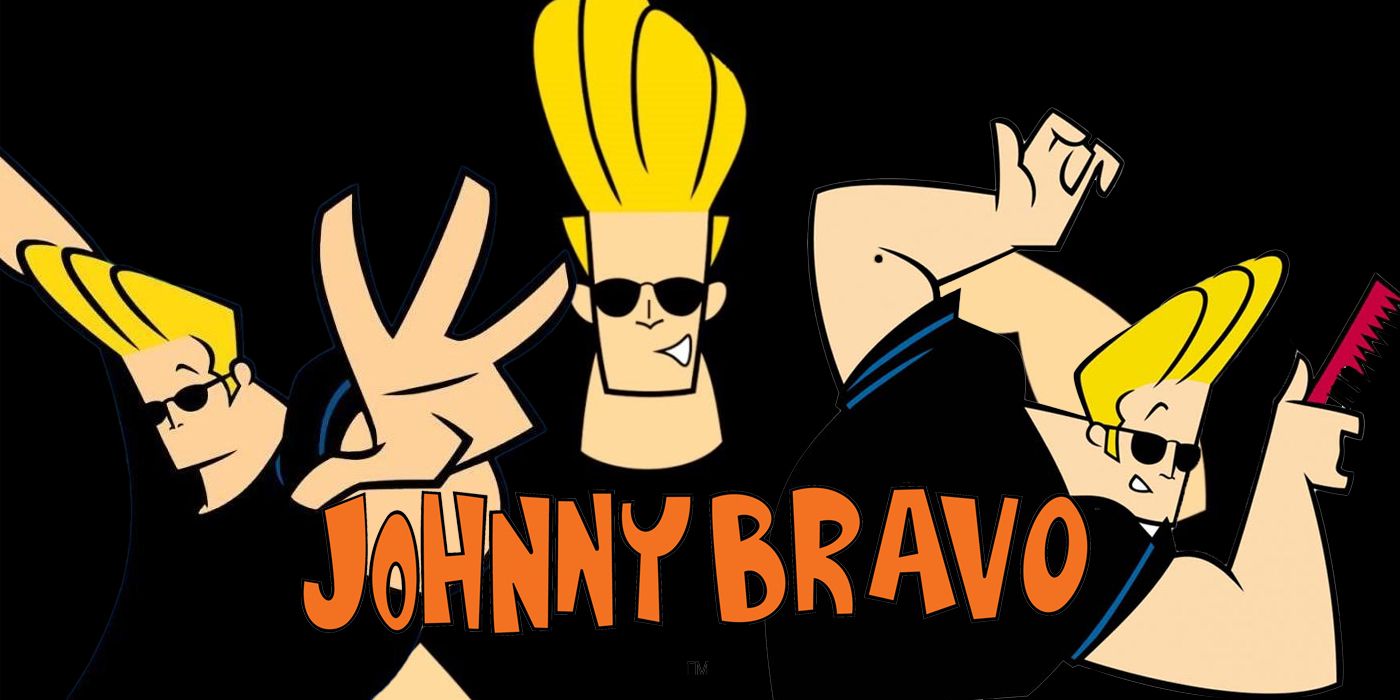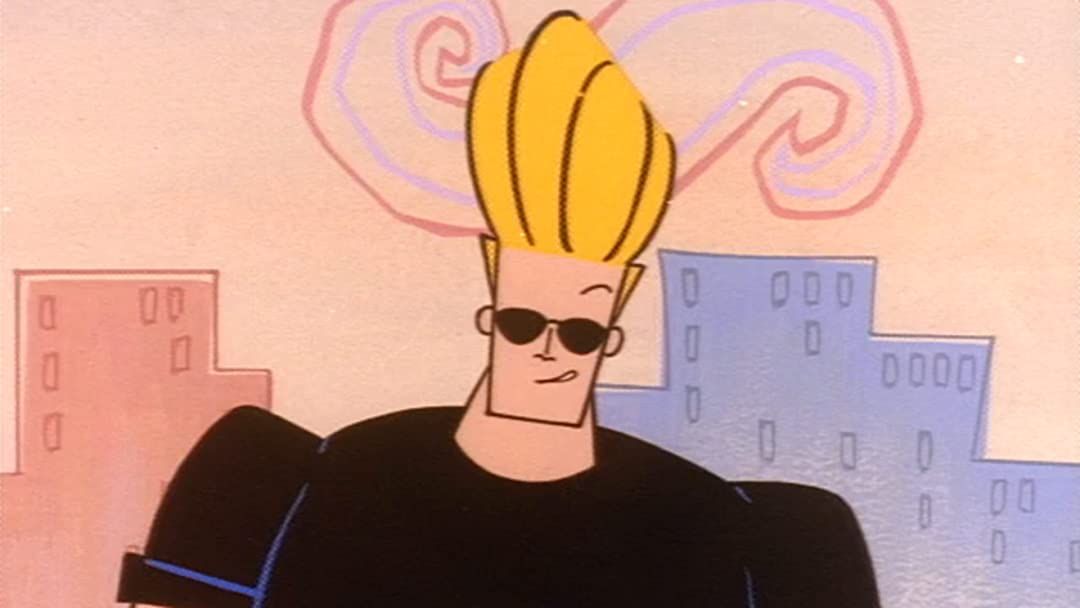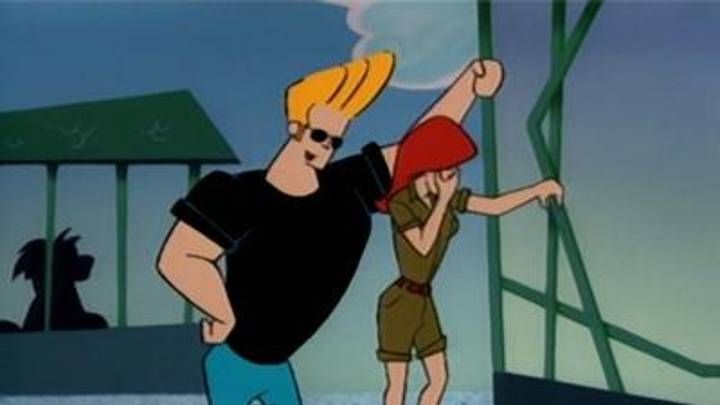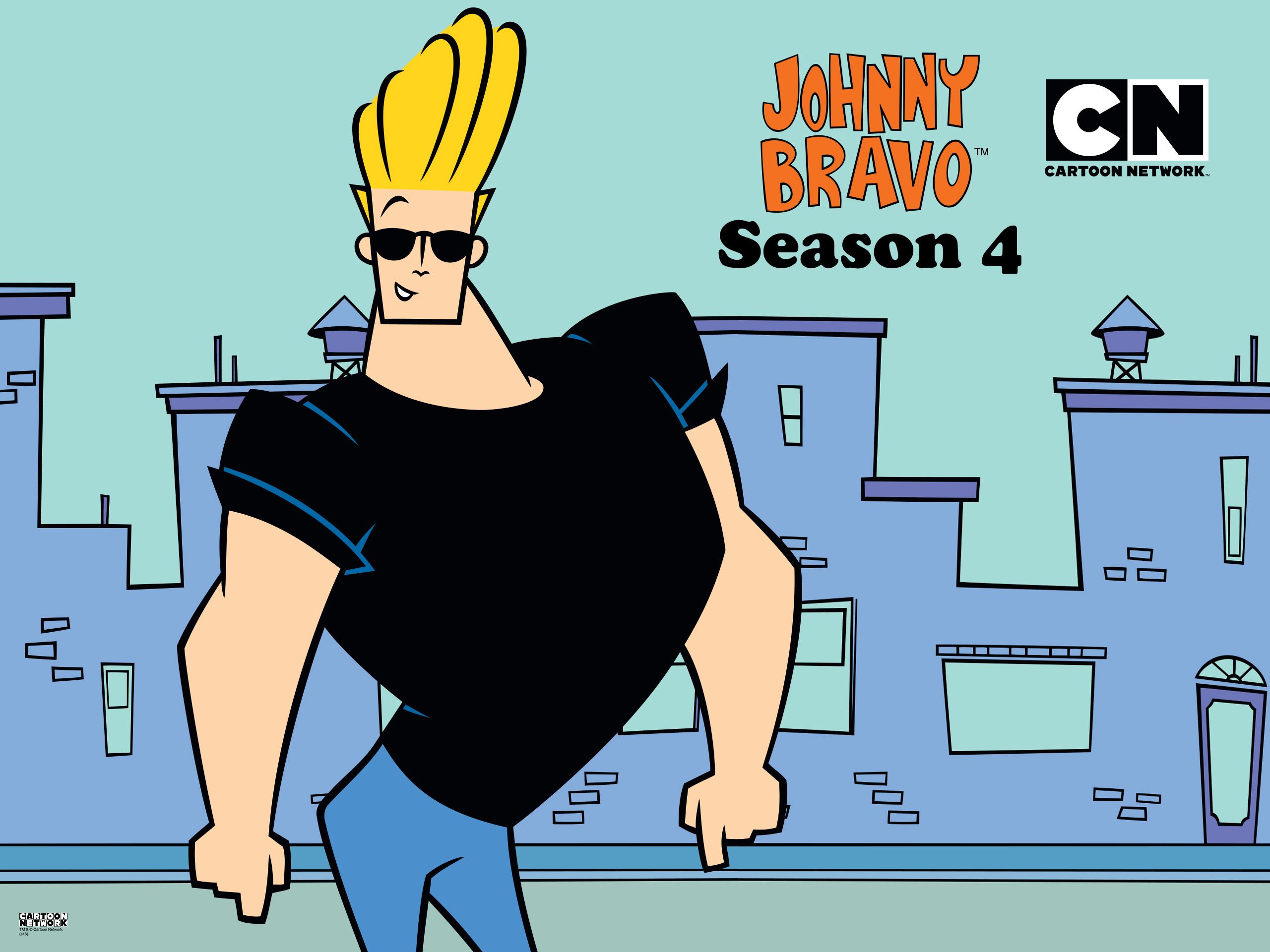From a handful of shorts on the What a Cartoon! showcase to one of the most prominently featured Cartoon Cartoons, Johnny Bravo may have been a meatheaded buffoon, but he led a charmed broadcast life. It was a feat that caught his original creative team by surprise. “No one really thought it was going to go anywhere," recalled Butch Hartman, a writer/director for the series, for its DVD release. "Not only has it gone somewhere, it’s actually still around, it’s very iconic now.”
That a show on an ostensibly kid-friendly network with a lead like Johnny could find an audience is a surprise, but that wasn’t the only factor working against the series. Johnny Bravo went through multiple retools during its run, and the shifts in look and tone were so pronounced that it’s all the more impressive that the show retained viewers.
Johnny Bravo was created by Van Partible, who had impressed Hanna-Barbera with his Elvis-impersonation thesis project and was given the chance to expand it into a pilot. The central character's personality expanded to include James Dean and Michael Jackson influences while retaining the Elvis-type voice (courtesy of voice actor Jeff Bennett). “[He’s] a very narcissistic man,” Partible said of this fusion, “[a] guy who doesn’t get it. He’s kind of sleazy but he has a good heart.” The proof of that was in the initial short, about Johnny’s efforts to impress an attractive zookeeper by capturing an escaped gorilla (spoiler: it ends badly for him).
The pilot aired through What a Cartoon!, and based on its success, Cartoon Network picked up Johnny Bravo for a 13 episode season. Along with Hartman, the initial crew included Seth MacFarlane, Steve Marmel, and Jospeh Barbera himself; Partible’s goal for Johnny Bravo was to evoke the early Hanna-Barbera cartoons. Beyond character and background design, this extended into structure as well: Partible saw the show's middle segment as a parody of The New Scooby-Doo Movies, a showcase for various guest stars. Scooby-Doo himself was one, along with Donny Osmond, Farrah Fawcett, and Adam West. The only permanent supporting characters in Johnny’s segments, however, were his doting momma Bunny and Little Suzy, a round-headed neighbor girl with a kiddie crush on Johnny. It was with them that Johnny’s good heart was likeliest to shine through. More often, he was shot down by the ladies (learning nothing from his failures) or fumbling his way into and out of surreal encounters with a broad range of characters and talking animals. Their one common element: they didn’t like Johnny.
Ideas developed in a way unique for the time and place. “[Johnny Bravo] was one of the few shows…at Hanna-Barbera that...was, to some extent, writer-driven,” recalled Seth MacFarlane. Contemporary series led with the storyboard and animation process; Johnny Bravo led with scripts. And the writers of those scripts were well aware of the risqué possibilities granted them by such a mature lead character. If there were concerns about censorship, Partible didn’t recall them. “No one was really watching Cartoon Network,” he claimed on the DVD. “As far as content, they were pretty lenient.” Just how far was that content pushed? Johnny played the “what are you wearing” phone game and one episode all but admitted he wasn’t a virgin.
The result of all this was one of the most idiosyncratic cartoons of the late 90s. Even among the diverse line-up of Cartoon Cartoons, Johnny Bravo stood out. Its appeal to adult situations was less discreet, its indulgence in mid-20th century pop culture more overt. The style of writing had an appealing rhythm and wit to it. The range of situations and personalities Johnny faced let him show off every facet of his (admittedly limited) personality. But Johnny Bravo’s first season also had an awkwardness to it. The tradeoff for having so many locales and characters was that Johnny’s hometown of Aron City didn’t have much of an identity. Compounding the problem was the tiny size of the supporting cast. Jumping straight into “Johnny Bravo Meets…” type episodes before Johnny and his friends could establish a status quo put the cart before the horse. And there was a tension within the design. The animation of Johnny Bravo has some wonderful speed and dynamism to it in the first season, but the characters were rounder and softer than anything from the heyday of Hanna-Barbera. The color palette tended toward pastel shades. It was such a cuddly look that it seemed at odds with the personality of the he-man at the center of it all.
The first season of Johnny Bravo aired through 1997. At its finish, Van Partible was fired. “I can only compare it to being forced to give up your baby...and watching it go to parents who were making choices you didn’t agree with,” Partible said of the experience, though he conceded some truth to the network’s reasoning that he “lacked the managerial skills needed.” In his place, Gary Hartle was put in charge as supervising producer. An entirely new team of writers, directors, and storyboard artists was brought in. And when Season 2 of Johnny Bravo debuted on July 2, 1999, it was with a whole new look.
Gone were the pastel shades and rounded forms. The colors were intense, with harsh breaks of highlight and shadow and attention-grabbing textures. Johnny still did the Monkey and shouted “oh, momma,” but he did it with a taller, broader, and more angular body. Momma Bravo was sharpened up as well (with a color swap to boot), and Little Suzy morphed from round to gangly (a design choice the new team apparently reconsidered; she was redrawn in a compromise between the two looks after a few episodes). Talking animals were few and far between, and except for an appearance by Luke Perry, the celebrities were gone too. But the permanent cast was expanded with two additions: super-geek Carl Chryniszzswics and local diner owner Pops.
The cast still made their way around the world, but situations became more immediately focused on the relationships between Johnny and this enlarged cast. Carl idolized Johnny, while Johnny saw Carl as an obnoxious dweeb. The avuncular Pops offered both young men a paternal figure - when he wasn’t ruthlessly exploiting them or making chili out of endangered species. Little Suzy morphed from sweetness incarnate to a peppy extrovert, more likely to cheerfully pester Johnny than swoon over him. Even Bunny branched out, with myriad hints given as to careers in her past. Johnny himself became a bit more crass with the ladies and a little less good-hearted underneath, but his commitment to “cool” was more pronounced.
This was when Johnny Bravo hit its stride. Having Carl and Pops on board, and leaning more heavily into the dynamics among the main cast, gave the series a foundation it lacked before. The new design sensibility didn’t reflect the original Hanna-Barbera goal, but it did feel more appropriate to Johnny’s character. Adult humor and the individual wit of Partible’s crew were largely lost, but the personalities of Johnny and his four supporting stars generated good chemistry, and something of the original format lingered through the few talking animals and guest stars that remained. If Partible himself found the results of the revamp disagreeable, one could hardly blame him; for this viewer, it was an ideal middle ground.
Unfortunately, it wasn’t a middle ground that proved sustainable. The series went through another visual metamorphosis when it switched from traditional to digital ink and paint midway through Season 2. From pastels to vibrancy, the color now turned flat. The animation became more limited. If this was an inevitable concession to new technology, there was no such excuse for the deterioration of the writing. Plots increasingly relied on tired movie parodies and stock cartoon situations. The supporting cast remained strong even in these settings, but the star suffered a crisis of personality.
Johnny Bravo was never a smart man, but by his third season, he was giving Homer Simpson a healthy challenge for Cartoon Moron of the Year. The series fell into the rut that so many do, heaping disdain upon their own characters for laughs, sending Johnny further and further down the intellectual ladder. Also like Homer, he became more of a “jerkass,” an ever-growing burden on his mother and friends, and his vices became harder to square with the basic facts of his character. It made little sense, for instance, to have a 50s greaser throwback be incapable of handling a car. And a well-built macho man isn’t someone who can easily support jokes that depend on his being the unhealthiest man alive.
Ironically, as Johnny became more of an unbearable pig in his own series, he enjoyed a second life as a network personality. The Cartoon Cartoon Fridays block rotated through multiple hosts, and Johnny was among the most effective. Cartoon Network found him impressive enough as an emcee that they created a spin-off, JBVO: Your All Request Cartoon Show. Viewers could write in to request a short cartoon, and Johnny presented chosen requests and called the requesters. By the time Cartoon Network chose him as the host for their Fancy Anvil Awards spoof, he could be called the Billy Crystal of the channel. The charm Partible wanted at the core of the character shone through in these appearances, and I wonder if Johnny’s success in these network promos might have been a major factor in his retaining popularity even as the series declined.
The third season of Johnny Bravo ended in 2002, and the show went into another hiatus. Van Partible, who had left animation in the face of looming financial stress, tried to dip a toe back in the water with a fresh pitch to Cartoon Network. The same executives who had fired him from his own series saw potential in the pitch – not for the show, but for Partible, and for the future of Johnny Bravo. They brought him back to supervise the last season. Partible couldn’t bring his original team with him; Hartman, MacFarlane, and the others had grown into creator/showrunners in their own right; so he built a new one. And with his creator back behind the drawing desk, Johnny underwent his final revamp.
It would have been easy to revert the look back to the first season, and the round forms and pastels did return, but Partible was mindful of what had happened while he was away. He and his new team took the backgrounds of Hartle’s seasons and recolored them. Carl and Pops’s roles were reduced, but they were still around. And while Little Suzy got her original design back, she went through another personality change. From sugary sweet to peppy and smart, she ended the series as a detached, borderline smug observer quipping through the cartoons. It was her least appealing incarnation.
But Johnny’s changes were more than welcome. He picked a few IQ points back up, mixed it up with celebrities again, and displayed fresh signs of a redeemable core. Even without the original writing staff, the particular writing style from the show’s early days was discernable. References to movies and pop culture became more sophisticated; for example, a nod to Little Shop of Horrors came through the structure of a musical number in a high school setting, not a conventional spoof of the play’s plot. And if the risqué humor was less in evidence (and, one suspects, less permissible with a higher profile), there were more hints of it in Season 4 than the previous two.
To this day I think the early Gary Hartle's styling for Johnny Bravo looks better. Carl and Pops being so diminished hurt the last season too. But Season 4 is an impressive offering. It wasn't as disjointed as the first, celebrities were more effectively incorporated into the series, and the setting was more solid. There was reason to care what happened to Johnny again. Through a few choice episodes that explored his past and his relationship to women, he even grew a little – as much as a cartoon character in a floating timeline can grow, anyway. And for how passionately Van Partible spoke about losing his series, it's only right that he had a chance to close it out.




